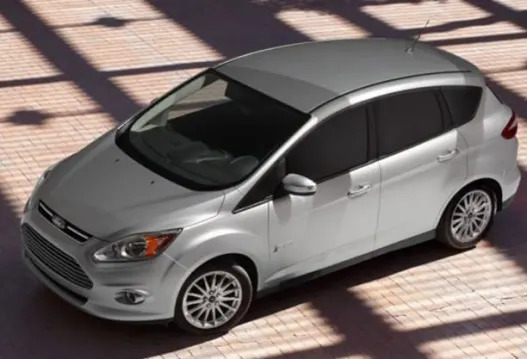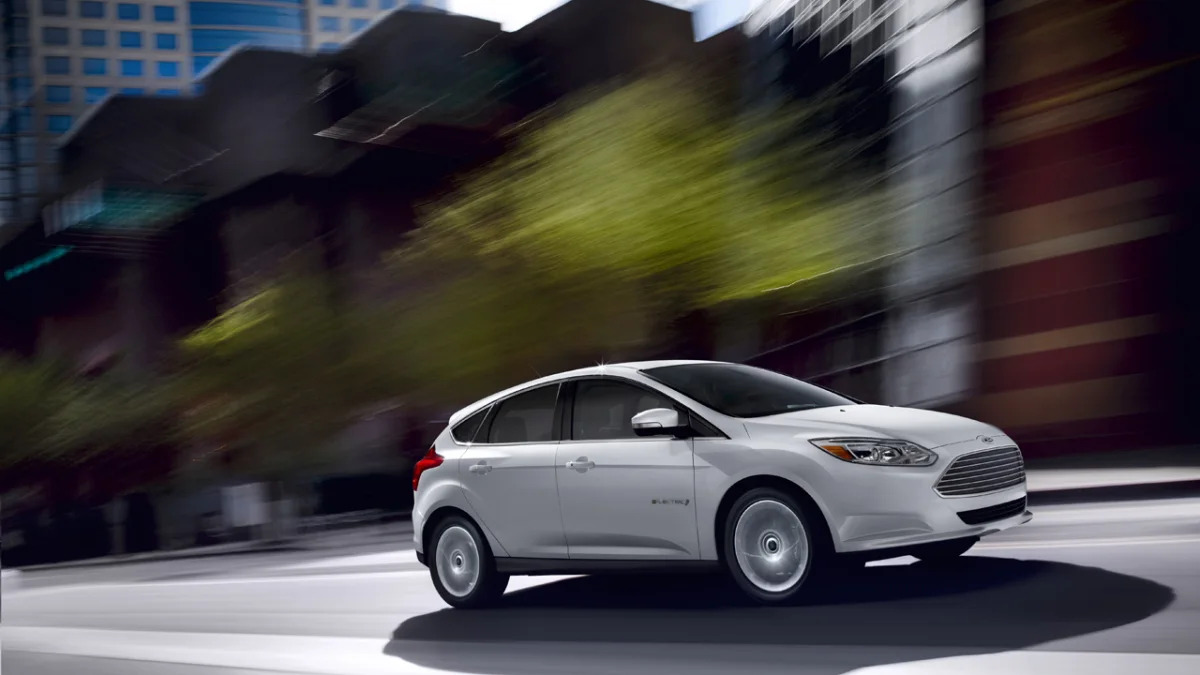The annual autofest known as the North American International Auto Show previews a plethora of exciting new products that we'll see and drive later in the year, from tiny urban commuters to family sedans and crossovers to hard-working big pickups and SUVs. It's also a once-a-year cornucopia of auto executives and leaders from around the world.
ABG: Where will Ford go beyond its current Focus EV and hybrids, and will there be a Ford EV and/or hybrid on its own energy-optimized platform one day.
KL: We don't want to do a dedicated electric vehicle with all the development costs borne by a niche product. At the Michigan Assembly plant right now we're building the Focus electric, PHEV and EcoBoost on the same assembly line. Also the C-Max, with both a hybrid and an Energi plug-in, and we use that same power pack in the Fusion Hybrid and Energi. We want to be, "The power of choice" [a Ford marketing slogan], so having that choice for customers is very important. And if I want to sell the Fusion, Focus and C-Max globally, we can use these power packs wherever it makes sense. So as we go forward, you'll see us proliferating the power packs we have today. Then the question is, what do we do next? There will be some really fun stuff that you'll hear about in the future.

ABG: Is the efficiency difference between a dedicated ultra-efficient vehicle platform and a shared multi-use platform getting smaller as all platforms get more efficient?
KL: Exactly. Were going through aero studies now on wheels and tires and hood sealers on base vehicles. We have full aerodynamic wind tunnel studies going on with the base Focus and C-Max, so all of that [aerodynamic improvement] will be there for EVs. With all the pressure and desire for fuel economy, we have to look at everything, and the supply base is giving us opportunities and options. For example, we have an exhaust heat exchanger on our hybrids that warms the engine more quickly to allow for cabin comfort more quickly.
ABG: In the process of optimizing the efficiency of every Ford vehicle, are some technologies from the electrified versions translating back into other vehicles?
KL: Absolutely. We're seeing technologies developed or first utilized by the hybrid team quickly showing up on the rest of our vehicles. For example, 100 percent of our vehicles now have electric power steering. That was something we looked at first for hybrids, then realized that it improved both packaging and efficiency on conventional products as well.
ABG: But while using conventional platforms and manufacturing facilities for its EVs and hybrids gives Ford great economies of scale, couldn't you get much greater vehicle efficiency from an dedicated efficiency-optimized EV platform? Will we will ever see one from Ford?
ABG: In my experience, it has been difficult, if not impossible, to achieve claimed battery-only range from any plug-in hybrid. Are Ford PHEV drivers hypermiling to do that?
KL: In general, no, but some probably are. In my own commute, I'm getting 26 miles of EV range at 45 mph. But with that 21-mile range number based on an EPA estimate, if you're running heat or air conditioning, those things can really rob your range. And how to get more efficient air-conditioning and heating are among the things we're looking at. I've had customers in Northern California tell me they don't even use their cars' heater, only the seat heaters, which give them all the comfort they need.
ABG: How much of a PR hit was it for Ford to back off on hybrid fuel economy claims?
KL: For engineers, that's just another challenge. How do we continue to improve things to maximize fuel economy? How do we make sure customers understand what they are going to get? When customers see numbers on a label, we want them to be confident of achieving those numbers? We need to be sure that the label says what they're going to get, that we don't undersell or oversell it. We have some hybrid customers getting 56 mpg and others struggling to achieve what's on the label. That is a difficult analysis to do, but it was definitely something we needed to adjust.
So, in-between dozens of cool new-product unveilings on rotating stages during the two press days preceding the public show, we auto scribes grab what planned and impromptu interviews we can. Sessions with top industry leaders can be hard to get, but I was able to score a seat in a group session with then-General Motors North America president (now executive VP of global product development) Mark Reuss, and I also managed brief one-on-ones with a trio of vehicle electrification leaders, one each from Ford, BMW and GM, and what they said then remains relevant now. First up is Kevin Layden, Ford's Director of Electrified Powertrain Engineering."There will be some really fun stuff that you'll hear about in the future" - Ford's Kevin Layden
ABG: Where will Ford go beyond its current Focus EV and hybrids, and will there be a Ford EV and/or hybrid on its own energy-optimized platform one day.
KL: We don't want to do a dedicated electric vehicle with all the development costs borne by a niche product. At the Michigan Assembly plant right now we're building the Focus electric, PHEV and EcoBoost on the same assembly line. Also the C-Max, with both a hybrid and an Energi plug-in, and we use that same power pack in the Fusion Hybrid and Energi. We want to be, "The power of choice" [a Ford marketing slogan], so having that choice for customers is very important. And if I want to sell the Fusion, Focus and C-Max globally, we can use these power packs wherever it makes sense. So as we go forward, you'll see us proliferating the power packs we have today. Then the question is, what do we do next? There will be some really fun stuff that you'll hear about in the future.

ABG: Is the efficiency difference between a dedicated ultra-efficient vehicle platform and a shared multi-use platform getting smaller as all platforms get more efficient?
KL: Exactly. Were going through aero studies now on wheels and tires and hood sealers on base vehicles. We have full aerodynamic wind tunnel studies going on with the base Focus and C-Max, so all of that [aerodynamic improvement] will be there for EVs. With all the pressure and desire for fuel economy, we have to look at everything, and the supply base is giving us opportunities and options. For example, we have an exhaust heat exchanger on our hybrids that warms the engine more quickly to allow for cabin comfort more quickly.
ABG: In the process of optimizing the efficiency of every Ford vehicle, are some technologies from the electrified versions translating back into other vehicles?
KL: Absolutely. We're seeing technologies developed or first utilized by the hybrid team quickly showing up on the rest of our vehicles. For example, 100 percent of our vehicles now have electric power steering. That was something we looked at first for hybrids, then realized that it improved both packaging and efficiency on conventional products as well.
ABG: But while using conventional platforms and manufacturing facilities for its EVs and hybrids gives Ford great economies of scale, couldn't you get much greater vehicle efficiency from an dedicated efficiency-optimized EV platform? Will we will ever see one from Ford?
KL: I would never say never. But if you do a new platform with electrification in mind, many of the efficiencies [of a dedicated] platform can be garnered. With batteries becoming more energy dense, they can get smaller, so we can package them where we couldn't before. And if we design it from the ground up, we can make sure there's a place for that battery. I don't think we need a dedicated vehicle to be as efficient as we want to be. We have some PHEV customers getting over 95 percent of their range from the battery alone, and overall, they're reporting about 75 percent of their miles. The average US driver needs about 21 miles one way, so we can cover about half of their range if they can charge at work. And with the infrastructure, the number of charge stations, growing, it's gaining momentum."I don't think we need a dedicated EV to be as efficient as we want to be"
ABG: In my experience, it has been difficult, if not impossible, to achieve claimed battery-only range from any plug-in hybrid. Are Ford PHEV drivers hypermiling to do that?
KL: In general, no, but some probably are. In my own commute, I'm getting 26 miles of EV range at 45 mph. But with that 21-mile range number based on an EPA estimate, if you're running heat or air conditioning, those things can really rob your range. And how to get more efficient air-conditioning and heating are among the things we're looking at. I've had customers in Northern California tell me they don't even use their cars' heater, only the seat heaters, which give them all the comfort they need.
ABG: How much of a PR hit was it for Ford to back off on hybrid fuel economy claims?
KL: For engineers, that's just another challenge. How do we continue to improve things to maximize fuel economy? How do we make sure customers understand what they are going to get? When customers see numbers on a label, we want them to be confident of achieving those numbers? We need to be sure that the label says what they're going to get, that we don't undersell or oversell it. We have some hybrid customers getting 56 mpg and others struggling to achieve what's on the label. That is a difficult analysis to do, but it was definitely something we needed to adjust.










Sign in to post
Please sign in to leave a comment.
Continue